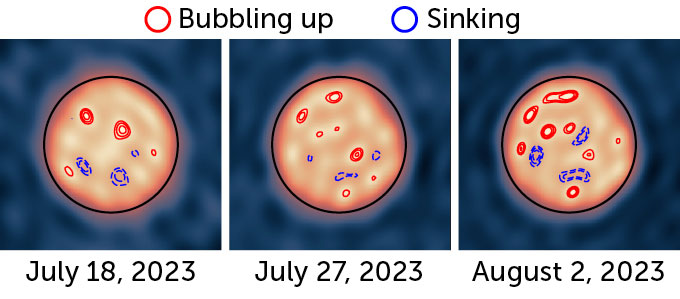For the first time, astronomers have seen gas boiling and bubbling on the surface of a distant star.
Scientists observed the red giant star R Doradus with the Atacama Large Millimeter/submillimeter Array, or ALMA, in Chile over four weeks in July and August 2023. The series of images show large cells of gas rising to the star’s surface and sinking back down, the team reports IN Nature September 11.
These bubbles are the hallmark of convection, the process that transports heat and energy around the interior of stars. “It’s kind of the principle of a lava lamp or boiling water,” says astronomer Wouter Vlemmings of Chalmers University of Technology in Gothenburg, Sweden.
Similar bubbles have been seen in other giant stars. But this is the first time the speed and motions of the bubbles have been tracked in a star other than the sun.

R Doradus is about 180 light years from Earth and is nearing the end of its life (SN: 7/23/21). As part of its dying process, it has inflated to about 350 times the width of the sun, although the two stars are roughly the same mass.
Convective cells on the surface of the star are correspondingly large. A single cell stretches 75 times the width of the sun. The cells rise and fall inside the star at about 20 kilometers per second, about 60 times the speed of sound. That’s faster than astronomers expected based on how convection works in the Sun, and fast enough that a tiny fraction of the gas could escape into space. (SN: 12/5/13).
These observations and others like them could help shed light on the origins of the elements that make up stars, planets and humans. (SN: 11/29/20). Most of the stardust that goes into new objects “comes from stars like the one we saw,” says Vlemmings. “But the process of how this works is still not fully understood. We would like to know the physics, the details of how this works.”
#dying #star #similar #lava #lamp
Image Source : www.sciencenews.org